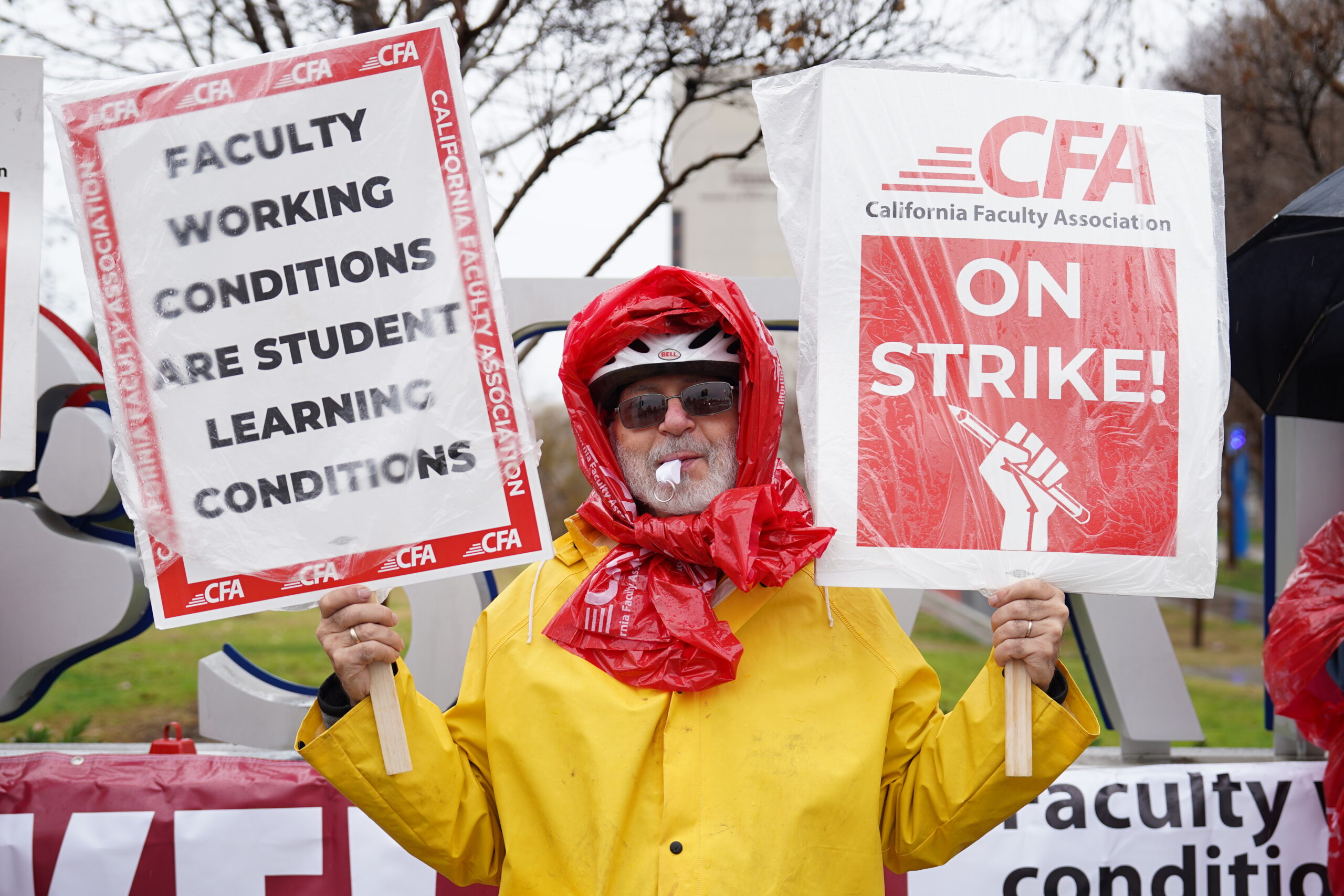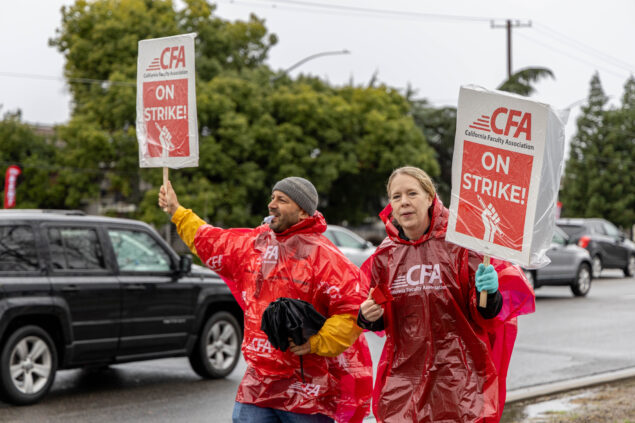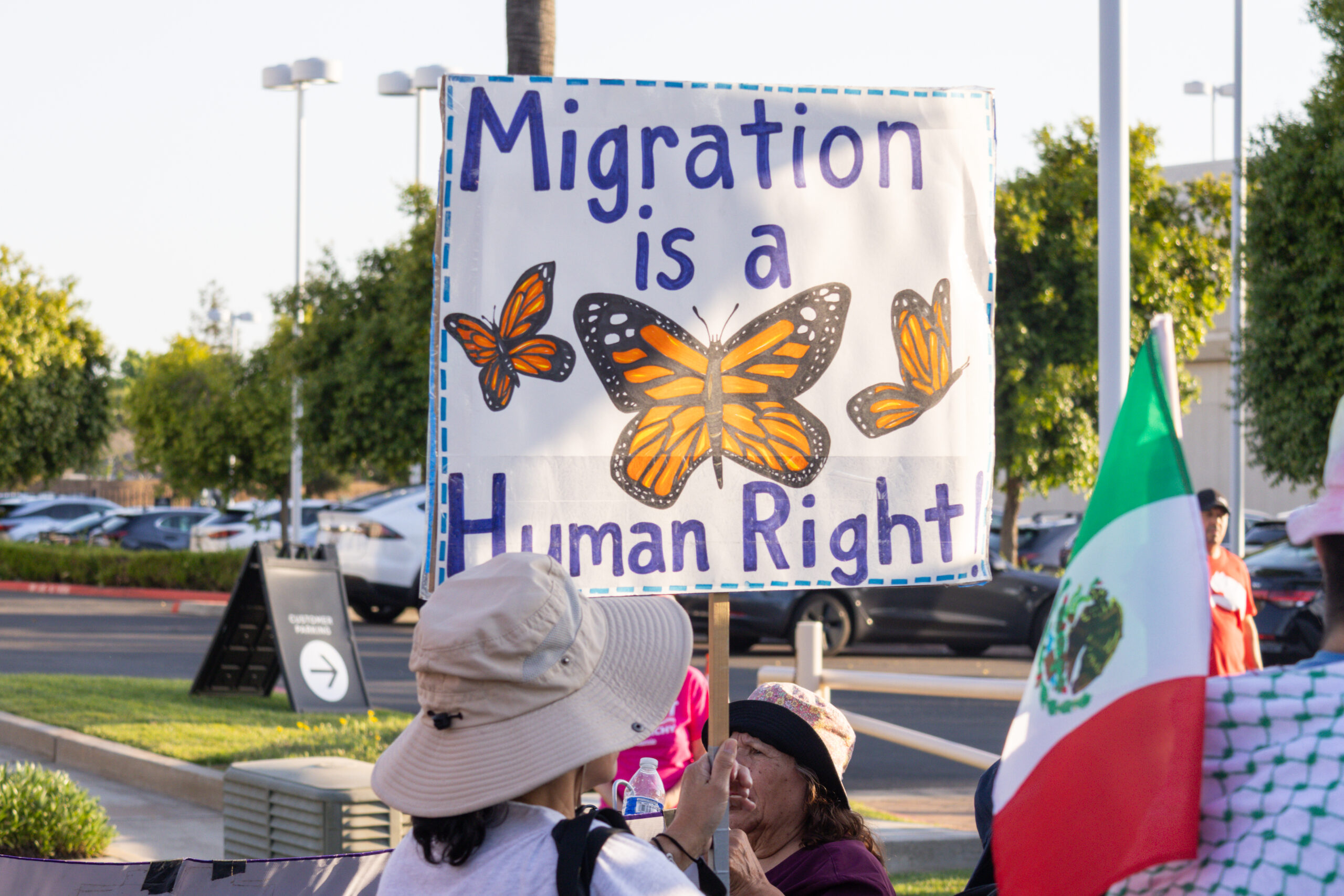
“Employees shall have the right. . . to engage in other concerted activities for the purpose of collective bargaining or other mutual aid or protection.” – The National Labor Relations Act (NLRA), Section 7
As the sun rose on the new semester, many California State University (CSU) classrooms across the state remained empty.
The California Faculty Association (CFA) is a union of 29,000 professors, lecturers, counselors, librarians, and other staff who provide student services, and they carried out a labor strike on January 22, the first day of the spring semester.
The union has been negotiating for better pay, lighter workloads, campus and mental health accessibility for students, and improved parental leave since last year.
The CFA and CSU management have completed a long and tedious negotiation process thus far. In June of 2023, the two organizations met to discuss several articles of the CSU faculty contract and began negotiations for changes. Two months later, neither side was able to come to an agreement, and California Public Employment Relations Board (PERB) declared an impasse, approved August 14.
Next, a mediator was assigned to aid the two parties in coming to a reasonable negotiation. The mediator found that no settlement could be reached, so the dispute was referred for fact finding.
In the fact-finding process, a panel of one individual from each party and one neutral individual reviewed the proposals. No agreement was reached, so the process moved on to the final offer, where the CSU management offered a 5% raise, and the CFA legally took strike action.
The strike was initially supposed to last a week, but the first day saw success, as negotiations reopened and a tentative agreement was reached. Classes have resumed and faculty members have returned to work.
The strike itself, successful after one day, has been described as “historic”.
“It was very inspirational to see all [CSU] campuses band together to form a front to fight for our pay,” said Dr. René Rodriguez-Astacio, an English professor at Fresno State.
And indeed, the strike was alive and well across California, with thousands of CFA members, as well as students and allies, forming picket lines and rallies.

Many faculty members were present voicing their concerns for not only better pay, but also speaking out for students against tuition hikes, advocating for increased campus accessibility, and requesting more mental health services.
Students felt moved to support their professors and lecturers as well. Noah Miranda, a Fresno State student, rallied alongside faculty members in the rain.
“It wasn’t just professors there,” Miranda said. “I got to talk to grad students, alumni, and student leaders who all showed up to lend their voices.”
“One of my friends spoke on behalf of Students for Quality Education to voice their support for the strike,” he said, moved by the show of solidarity. “It was fantastic to see, even in the rain and cold, professors of all departments striking as one”.
The faculty’s actions went further than the one-day strike, as they set an example for students who are following in their footsteps.
I am a student assistant, and student assistants across CSU campuses are voting to unionize in an upcoming election this month to fight for better pay and conditions for ourselves as well.
Speaking personally, I can say that the faculty who went on strike inspired me to advocate for myself as well. Their success is our success, and good things happen when laborers stand by and for each other.
By forming connections and solidarity, the CFA and its allies were able to make monumental steps toward the goal of pay equity and inclusivity, and student assistants all over California are hoping to do the same.
One of the main objectives of the CSU system is to provide quality education at affordable prices. Professors, lecturers, librarians, as well as student assistants and allies, are now stepping up to the plate and hitting home runs in protecting that goal and the people who make it happen.
While the strike was a huge success, there were also some professors who did not participate in the strike.
Alyssa Tobar, a part-time instructor at Fresno State, said she didn’t know about the strike. “I one hundred percent support my colleagues, but I couldn’t in good conscience cancel class without knowing the reason.”
Even so, Tobar mentioned that she greatly respected her colleagues’ right to strike, as well as her students’ right to support the strike. As such, she made course documents available online, and reassured her students that they would not face any penalties for not attending class due to the strikes.
“I didn’t want to penalize people [for participating in the strike] because I didn’t have an opinion yet,” Tobar said. “I didn’t want to put my students in a hard place.”
Tobar, and other professors who shared her situation, also contributed to the sense of solidarity by respecting everyone’s right to strike and unionize.
With the strike over for now, tensions remain as CFA members and allies wait with baited breath to see what comes next.
“There is still a lot of tension,” Dr. Rodriguez-Astacio postulated. “This is the moment where CFA and the administration are working through… all the offers that are on the table. There is an air of an expectation to see where this is going to go forward.”
Although deemed successful in reopening the bargaining table, it should be acknowledged that there is still work to be done. Rodriguez reiterated, “Our goal has been established, [but] this is not an immediate solution, this is something that is still ongoing.”
It is yet to be revealed what implications the strike carries for future CSU employee pay and campus reform, as negotiations are still underway. If you wish to support the faculty in their fight for student accessibility and pay and labor condition equity, keep up-to-date with the latest advancements in the situation. Inform yourself, inform others. The CSU system holds promise, but the fight for educational equity and justice– for faculty and students alike– is far from over.


